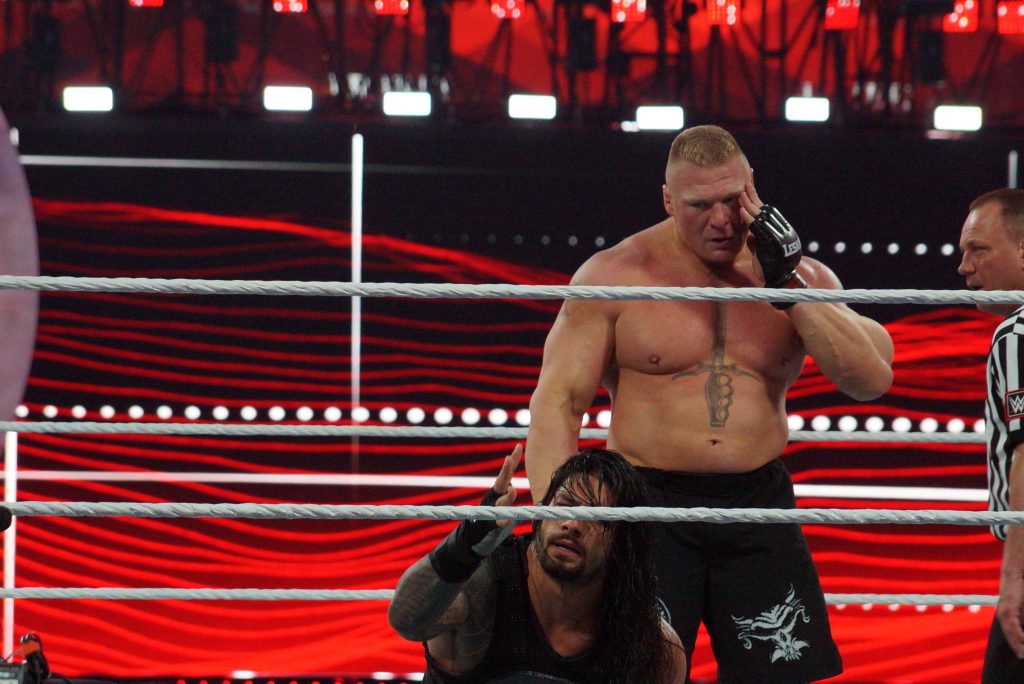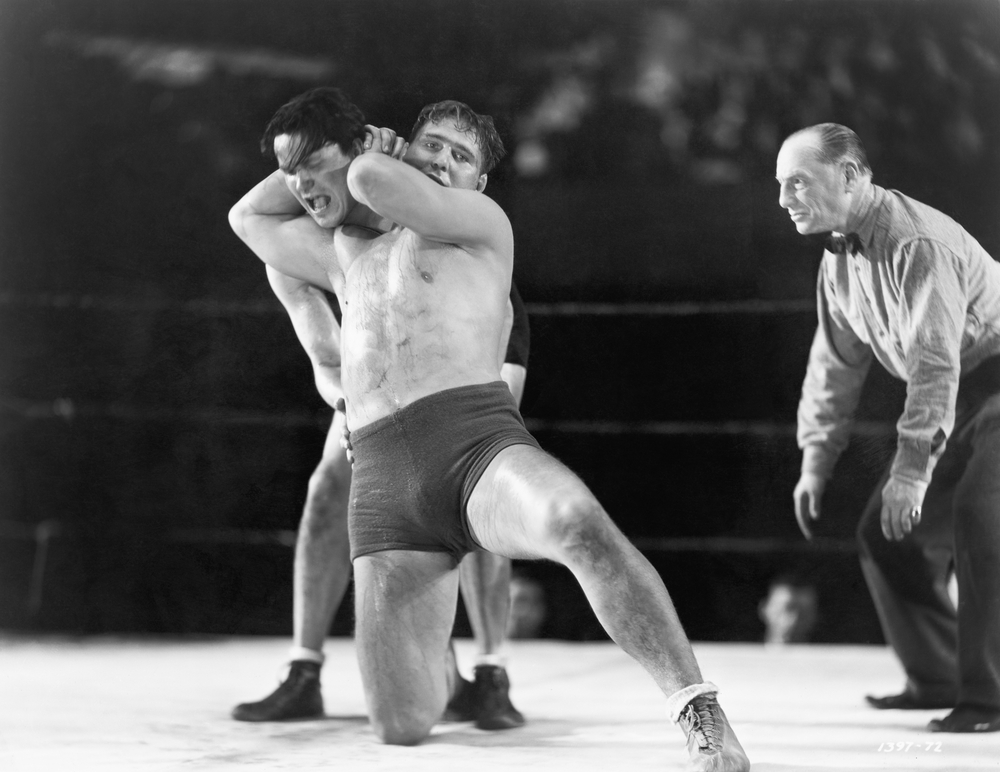When most people think of “sports,” the first thing that usually pops into their heads is a game involving a team of players, working together against another teamcompetitively to reach a certain goal, and usually played with a ball of some sort. But that is only a mere generalization of what a common sport may be, because asDictionary.com defines it, a sport is simply any kind of “physical activity that is governed by a set of rules or customs and often engaged in competitively,” involving “physical exertion and skill.” Additionally, a sport must have “side by side competition, a scoring system,” as well as “a margin of risk for injury.” So in order to be called a real “sport,” an activity must consist of physical exertion and utilization of skill, include side by side competition, be governed by a set of rules and a scoring system, and have a margin of risk for serious injury. Today competitive activities such as basketball, football, and baseball have become popular around the world as some of the most renowned “sports” of our time. The players are seen as role models, as icons, as celebrities. But alternatively there is a much more controversial activity in which its participants engage in the same kind of physical activity, take the same kinds of risks for injuries, are bound by a similar system of rules, and are also fueled by a competitive desire to perform. That activity today is known as professional wrestling, often referred to as “sports entertainment.”

Professional wrestling is merely a form of performance art in which the participants engage in simulated sporting matches. The wrestlers, or “superstars” as they are referred to, are both athletes and performers, having not only wrestling ability but also the ability to act and perform in a variety of different ways in front of a live crowd. Professional wrestling originally started out as part of carnival shows in the 19th century, where various “strong men” would take on challengers in fights for money and prestige. This was often referred to as hook wrestling, or catch-as-catch-can wrestling, which primarily involved grappling and grapple-related moves. Over time “wrestling” gained promoters who introduced the element of gimmicks and angles into the sport, in an attempt to create a more dramatic feel to the previously random match-ups. During the 20th century, promoters stopped pitching professional wrestling as a “legitimate sport,” and instead introduced the concept of kayfabe, which is basically the portrayal of the different storylines, gimmicks, events, and feuds within the promotions and among the wrestlers as “real,” and not as works, which is what they were and still are. Kayfabe refers to the fans suspending their knowledge that professional wrestling is worked, staged, and scripted, into believing that everything that happens is a “shoot” rather than a work.
Sport or not, professional wrestling, unlike professional basketball, football, or any other popular sports of the 20th century, made its slow climb into the mainstream over the course of the second half the century, with the creation of wrestling’s most popular and well-known promotion, World Wrestling Entertainment. Vincent J. McMahon, father of current WWE owner Vincent Kennedy McMahon, built the company originally as the World Wide Wrestling Federation in the early 1960s, and in 1980 his son Vincent K. purchased the company from him, giving birth to the World Wrestling Federation. Over the course of the last few decades, WWE has taken professional wrestling to a whole new level, relying much more on gimmicks, angles, storylines, feuds, and kayfabe, creating what today people refer to as a hybrid of sport and soap opera.
What has become most important to the wrestling world is never “breaking kayfabe,” that is, always making sure to portray all happenings in the industry as being “real” and not scripted. If a superstar is out or unable to wrestle due to injury or personal reasons, a storyline will be implemented to account for their absence. According to the article Cultural Politics and Professional Wrestling, new superstars have often been given gimmicks and old ones often repackaged with new gimmicks, such as being a “demonic monster from hell” or an “evil adulteress trying to take over the company,” to name just a couple that have been created over the years. Yet the vast majority of wrestlers are just athletes trying to make themselves known to the world. And in the end, the fact that professional wrestling is scripted and staged has no bearing on the fact that it, like high school, college, or amateur wrestling, is in fact, a real sport and fits any and all criteria that make it such.

As defined earlier, a sport, in order to be called a “sport,” must involve both physical exertion and skill from the participants. Wrestling matches, both televised and at live events, are some of the most physical bouts imaginable, and that is most true in professional wrestling, where, any variety of fighting styles are allowed as long as they do not involve illegal maneuvers. Wrestling matches can last anywhere from a few minutes to over one hour, depending on the creative team. Most free, televised match-ups will usually end in under 20 minutes or so, but at most pay-per-views there will be superstars who will be required to put on quality, 60 minute match-ups or longer, especially during major PPVs like Wrestlemania, the crown jewel of wrestling, equivalent to the Super Bowl or the World Series.
WWE is currently the world’s largest professional wrestling promotion, as stated in the article The Spectacle of Excess, with its superstars performing at anywhere from 10-12 live events, show tapings, and pay-per-views every week both across the nation and in frequent and highly-anticipated tours in Mexico, South America, Japan, Australia, Asia, United Kingdom, and several other European countries and arenas, from Madison Square Garden in New York City to the Staples Center in Los Angeles. Superstars are expected to wrestle at a certain number of shows based on their contract, and it can easily start to take its toll month after month, year after year. Athletes must also train at wrestling gyms and training grounds, such as the Ohio Valley Wrestling and Deep-South Wrestling schools utilized by and associated with WWE, before they can enter an actual WWE ring and perform in front of tens of thousands of fans live and millions of viewers across the world. Superstars are instructed every week on what moves they need to pull off, how long they have to exert themselves, and anything else they need to perform during their matches. When not in a televised match or wrestling at live events, superstars are training or working out to keep their physiques in shape.
Another requirement that must be met is the inclusion of “side by side competition.” The vast majority of matches consist of one athlete taking on another in a battle to pin the opponent. However, there are many exceptions to this standard match type, and over the course of the past few decades, new matches and new rules have been developed but with the same goal – to win. Tag team matches include a team, usually consisting of two, three, four, or five wrestlers, taking on another team, or up to three other teams, and can be one pinfall to a win or elimination style. There are also what are known as elimination matches, including the Battle Royal, Elimination Chamber, and Tag Team Elimination, among others, in which there can only emerge one winner from several participants. Also included in that category is the King of the Ring, a now defunct and specialized WWE pay-per-view in which multiple contestants battled in a pyramid-style tournament until only two superstars remained. WWE writers will also often put superstars who have “coinciding interests” together into factions, or as they are called in professional wrestling, “stables,” which are primarily teams of superstars that look out for their own interests and back up their members during matches. These stables will often compete together during competitions and some will even resort to using interference and illegal tactics in order to win.
In every division in professional wrestling, there is a championship title belt that is the pinnacle of what each superstar in the division will strive to achieve. Becoming, reigning as, and defending as a champion is the ultimate goal of most athletes. There is the Cruiserweight Title in the Cruiserweight Division, which consists only of wrestlers classified as “light heavyweights,” or wrestlers that weigh under 200 lbs and can therefore perform high-flying, high-risk maneuvers. The Women’s Title is reserved for the division of women, or the Divas of wrestling. The Tag Team Titles are for those superstars that specialize in two-man tag team wrestling. There is also the United States Title and the Intercontinental Title, which are eligible for any superstar to compete for. Finally, the world titles in WWE are the WWE Championship and the World Heavyweight Championship, one for each brand, the most prestigious of all titles, as they signify the holders as the reigning champions of the world. Only by winning matches and winning over the crowd can a wrestler even be considered for a title shot in any one of these areas.
A “sport” must also be governed by a set of rules and include a scoring system. In professional wrestling, there are certain rules that pertain to a match depending on what type it is. First and foremost, the referee in the ring is the one with complete control over the fight, meaning his rule is law and his word is non-debatable. In a standard match-up, wins are awarded to an athlete if his or her opponent loses by pinfall, submission, knockout, count-out, or any type of disqualification. Disqualifications include illegal holds or maneuvers, including low blows, biting, or choking, any kind of outside interference, the use of any foreign object, or putting one’s hands on the referee. Legitimate ways of winning include the pinfall, meaning the referee completes a 3 count with the opponent’s shoulders on the mat, submission, meaning one athlete is able to force the other to tap out or lose consciousness under a hold, knockout, meaning the opponent loses consciousness after being struck or slammed, or count-out, meaning the opponent stays out of the ring for more than 10 counts.
There are also, of course, many specialty matches that have been added to the rulebook over the course of the last few decades, and they often consist of many rule variations, including differences in how a participant can win, how many wrestlers are involved, the environment of the match, what actions and objects are allowed and what are not, confinements, and special stipulations, among others. For example, in a Steel Cage match the only way a superstar can leave the ring area is by climbing over the cage, thereby winning. In a Ladder Match, the first contestant to climb up a ladder in the middle of a ring and retrieve the object hanging above is the winner. In an Ultimate Submission Match, two opponents battle for a set period of time, with the winner being the one who achieves the most submissions during that time. Other specialty matches include Hell in a Cell, Best 2 out of 3 Falls, TLC Matches, Street Fight/Hardcore Matches, Buried Alive Matches, Last Man Standing Matches, Handicap Matches, Lumberjack Matches, and many more. Every type of match that has been created or added has its own set of rules and restrictions that must be followed by the competitors.
Finally, in order for something to be considered a real “sport,” there must be a margin of risk for serious bodily injury. And in the case of professional wrestling, that is perhaps the one thing that happens more often and in more serious ways than in any other sport. Both minor and major injuries have become common in everyday wrestling matches, and many wrestlers in history have suffered serious career-shortening injuries or have needed major surgery as a result of what they do. Many high-risk maneuvers, such as moonsaulting onto an opponent off of a 50-foot steel cage, have led to broken necks, shattered spines, and other serious injuries. In the case of Triple H, who has been a WWE veteran for 10 years and a 10-time World Heavyweight Champion, he suffered a major tear in his left quadricep muscle in 2001, which left him unable to place any weight on his leg, and required over half a year of surgery and rehabilitation before he could return to the ring. Chris Benoit, a 20-year wrestling veteran, had to undergo major neck surgery in 2002 following a serious injury that required spinal fusion surgery to heal. In 1997, one of the most popular icons in professional wrestling today, Stone Cold Steven Austin, suffered a near-career ending neck injury that would significantly shorten his career and is one of the major reasons that he is not active today.

And finally, no one could forget the traumatic incident that occurred in May of 1999, at a WWE pay-per-view, where wrestler Owen Hart met his death in front of a live crowd in Kansas City when, as the article Behind Fun Facade states, he “fell 78 feet into the ring, smashing his chest on a ring turnbuckle,” and was pronounced D.O.A. at a hospital minutes later, due to immediate “internal bleeding from blunt chest trauma.” Those are only a few examples of the many superstars over the years that have had their bodies battered, their careers destroyed, and their lives ended by the risk that they take in doing what they do to provide entertainment and compete to be the best. The matches are scripted, the fighting is staged, but the pain is real, and the danger and risk are serious.
So is professional wrestling a “real” sport? Does it fit all of the criteria that is necessary for something to be considered a sport? Professional wrestling, sports entertainment, requires its athletes to dedicate their lives to the ring, performing in tolling matches involving major physical exertion in front of the crowds and training for hours on end away from the cameras. Professional wrestling also consists of side by side competition, with one superstar taking on another to win championships, teams taking on each other for glory, and a vast array of matches that test superstars’ capacities to withstand punishment as well as their will to win. In addition, professional wrestling is governed by a set of rules, in which what a superstar needs to do to win, as well as what he or she needs to do to lose or be disqualified, is clearly outlined and changes depending on the match types, which in and of themselves are fairly great in number and variety. Finally, professional wrestling is as dangerous as, and likely much more dangerous than, any other sport played professionally. Athletes have lost more than just their bodies to the sport, many have lost their families and their lives. So, it seems very obvious that, given the requirements for what a “sport” is, professional wrestling fits all of the necessary criteria to be labeled as a “real” sport.

